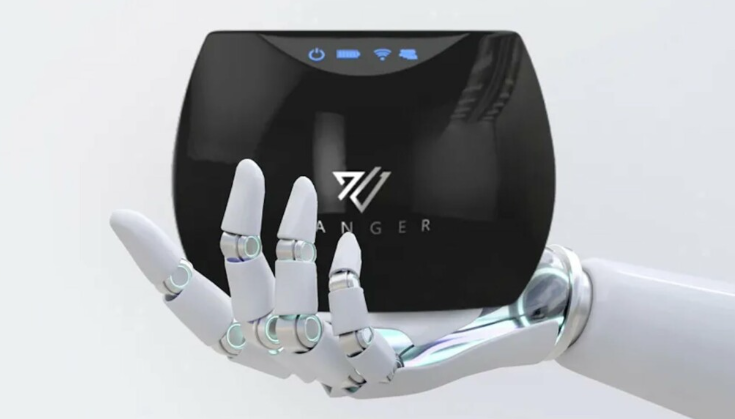As we navigate through 2024, technology continues to weave itself into the fabric of our daily lives, bringing with it transformative changes that affect how we live, work, and interact. The rapid evolution of technology is shaping our routines, enhancing convenience, and driving innovation across various aspects of our existence. This article explores the profound impact of technology on everyday life in 2024, examining key areas such as communication, home automation, health and wellness, transportation, and entertainment.
1. Communication: A New Era of Connectivity
In 2024, communication technologies are more advanced and integrated than ever before, reshaping how we connect and interact with one another.
a. Enhanced Social Media and Messaging Platforms
Social media platforms have continued to evolve, integrating more advanced features and providing richer, more immersive experiences. Platforms like Facebook, Instagram, and TikTok have incorporated augmented reality (AR) filters, virtual reality (VR) spaces, and AI-driven content recommendations to engage users more deeply. These innovations have transformed how we share our lives, from posting updates to participating in virtual social gatherings and events.
Messaging apps have also seen significant advancements. Beyond basic text and voice messaging, apps now offer enhanced video call capabilities, real-time translation, and seamless integration with other services. This connectivity allows for more fluid and spontaneous communication, bridging language barriers and enabling users to interact effortlessly across the globe.
b. Virtual and Augmented Reality: Redefining Interaction
Virtual reality (VR) and augmented reality (AR) technologies are becoming integral to daily communication and interaction. VR platforms allow users to create and inhabit virtual environments, facilitating immersive experiences for both social and professional purposes. For example, virtual meeting spaces enable colleagues to collaborate in a shared digital environment, while VR social platforms offer new ways to connect with friends and family.
AR technology enhances our real-world interactions by overlaying digital information onto our physical surroundings. From AR navigation apps that provide turn-by-turn directions to interactive educational tools that augment learning experiences, AR is enriching how we interact with the world around us.
c. AI-Powered Personal Assistants
AI-powered personal assistants, such as Amazon Alexa, Google Assistant, and Apple Siri, have become more sophisticated and intuitive. These assistants now offer more personalized interactions, understanding context and preferences to provide tailored responses and recommendations. They can manage tasks such as scheduling, reminders, and even controlling smart home devices, streamlining our daily routines and enhancing productivity.
2. Home Automation: Creating Smarter Living Environments
Home automation technology has made significant strides in 2024, transforming our living spaces into intelligent, responsive environments.
a. Smart Home Devices
Smart home devices have become ubiquitous, with a wide range of products designed to enhance convenience, security, and energy efficiency. Smart thermostats, lighting systems, and appliances can be controlled remotely via smartphone apps, allowing homeowners to adjust settings and monitor their homes from anywhere. For instance, smart refrigerators can track inventory, suggest recipes, and even order groceries automatically.
Security systems have also advanced, incorporating AI and machine learning to enhance safety. Modern smart security cameras and doorbells can recognize familiar faces, detect unusual activity, and send real-time alerts to homeowners. Integration with other smart home devices allows for automated responses, such as locking doors or turning on lights when suspicious activity is detected.
b. Voice-Controlled Home Automation
Voice-controlled home automation has become increasingly sophisticated, with voice assistants now capable of managing a wide array of devices and services. Users can control everything from lighting and temperature to entertainment systems and home security using simple voice commands. This hands-free control enhances accessibility and convenience, particularly for individuals with mobility challenges or busy lifestyles.
c. Energy Management and Sustainability
Technology is playing a crucial role in improving energy management and promoting sustainability in the home. Smart energy management systems use AI to analyze energy consumption patterns, identify inefficiencies, and optimize usage. Homeowners can track their energy use in real-time and make informed decisions to reduce their carbon footprint and lower utility costs.
Sustainable technologies, such as solar panels and home battery systems, are becoming more accessible and affordable. These technologies allow homeowners to generate and store renewable energy, reducing reliance on traditional power sources and contributing to a greener environment.
3. Health and Wellness: Enhancing Well-Being
The impact of technology on health and wellness in 2024 is profound, offering new tools and solutions to improve physical and mental well-being.
a. Wearable Health Technology
Wearable health technology continues to advance, providing users with comprehensive health monitoring and management tools. Fitness trackers and smartwatches can now measure a wide range of health metrics, including heart rate variability, blood oxygen levels, and sleep quality. These devices offer insights into overall health and help users set and achieve fitness goals.
Advanced wearables are also incorporating new features such as electrocardiogram (ECG) monitoring and continuous glucose tracking. These innovations enable users to monitor their health more closely and take proactive steps to manage chronic conditions or prevent potential health issues.
b. Telemedicine and Remote Health Services
Telemedicine has become a vital component of healthcare in 2024, offering patients convenient access to medical consultations and services from the comfort of their homes. Virtual health platforms provide video consultations, remote monitoring, and electronic prescriptions, reducing the need for in-person visits and improving access to care.
Telemedicine has proven especially valuable for managing chronic conditions, mental health services, and routine check-ups. It allows for timely interventions and ongoing care, enhancing patient outcomes and reducing healthcare costs.
c. AI-Driven Health Insights
Artificial intelligence is playing a key role in advancing health and wellness by providing AI-driven insights and personalized care. AI algorithms can analyze vast amounts of health data to identify patterns, predict potential health issues, and recommend personalized treatment plans. These insights help healthcare providers make more informed decisions and deliver targeted care to individual patients.
4. Transportation: Revolutionizing Mobility
Technology is transforming transportation in 2024, offering new solutions for mobility and reshaping how we travel.
a. Electric and Autonomous Vehicles
Electric vehicles (EVs) are becoming increasingly popular as technology advances and environmental concerns drive demand for cleaner transportation options. EVs now offer longer battery ranges, faster charging times, and improved performance. Major automakers are investing in EV infrastructure, including charging networks and battery technology, to support widespread adoption.
Autonomous vehicles, or self-driving cars, are making significant progress in 2024. While fully autonomous vehicles are still in development, advanced driver-assistance systems (ADAS) are enhancing safety and convenience. Features such as adaptive cruise control, lane-keeping assistance, and automated parking are becoming standard in many vehicles, paving the way for a future of safer and more efficient driving.
b. Smart Transportation Systems
Smart transportation systems are improving the efficiency and safety of travel by using technology to optimize traffic management and public transportation. Intelligent traffic signals, real-time transit tracking, and smart parking solutions are enhancing the overall travel experience and reducing congestion in urban areas.
Public transportation systems are also benefiting from technological advancements, with the integration of contactless payment methods, mobile ticketing, and real-time service updates. These innovations make commuting more convenient and efficient, encouraging the use of public transit and reducing reliance on personal vehicles.
c. Urban Mobility Solutions
Urban mobility solutions, such as bike-sharing programs and electric scooters, are reshaping how people navigate cities. These micromobility options provide eco-friendly alternatives for short trips and help reduce traffic congestion. Mobile apps make it easy for users to locate, rent, and pay for bikes and scooters, promoting more sustainable and flexible urban transportation.
5. Entertainment and Media: Expanding Horizons
Technology is continually evolving the entertainment and media landscape, offering new ways to experience and interact with content.
a. Streaming Services and Personalized Content
Streaming services have become the dominant way to access entertainment content, providing on-demand access to a vast library of TV shows, movies, and original programming. Platforms like Netflix, Hulu, and Disney+ offer personalized recommendations based on user preferences and viewing history, making it easier for users to discover new content.
Advancements in streaming technology have also led to higher video quality, including 4K and HDR, providing a more immersive viewing experience. Interactive content, such as choose-your-own-adventure stories and live streaming events, is becoming increasingly popular, offering new forms of engagement and entertainment.
b. Virtual Reality and Augmented Reality Experiences
Virtual reality (VR) and augmented reality (AR) technologies are enhancing the entertainment experience by providing immersive and interactive environments. VR gaming systems offer players the opportunity to explore virtual worlds and engage in dynamic gameplay, while AR apps overlay digital content onto the real world, enriching experiences such as gaming, shopping, and education.
VR and AR are also being used in the entertainment industry for virtual concerts, interactive theater, and immersive storytelling, offering audiences new ways to engage with content and participate in unique experiences.
c. AI in Content Creation and Personalization
Artificial intelligence is playing an increasingly important role in content creation and personalization. AI algorithms are used to generate music, art, and written content, as well as to curate and recommend media based on user preferences. This technology allows for the creation of highly tailored experiences and content that resonates with individual tastes and interests.
Conclusion
In 2024, technology is profoundly impacting our everyday lives, transforming how we communicate, manage our homes, maintain our health, travel, and enjoy entertainment. From advanced communication tools and smart home devices to wearable health technology and electric vehicles, these innovations are enhancing convenience, efficiency, and connectivity.


